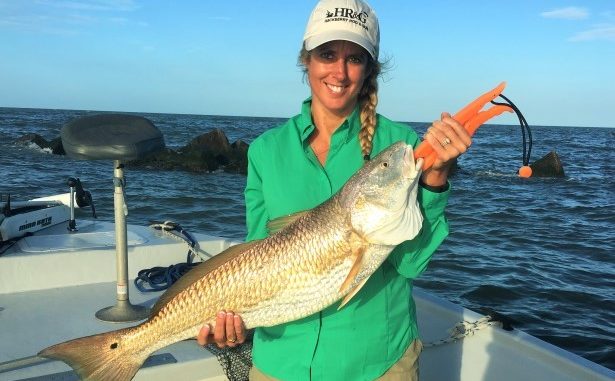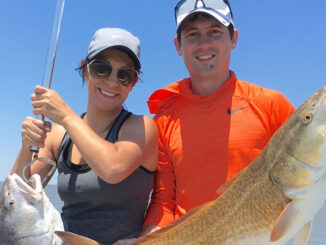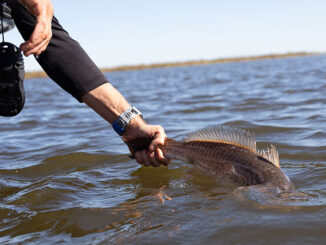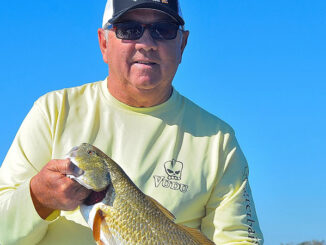
A long-time charter boat captain has just the place for anglers to go to tussle with redfish in the Calcasieu Lake region this month.
Kirk Stansel, who has been a saltwater fishing and waterfowl hunting guide for decades, points people south to the Cameron Jetties.
Sure, this is a prime month for wade-fishing to target speckled trout — really, really big trout.
But those jetties have saved a fishing trip many times during the month of February, he said.
“Oh yeah, redfish are on the jetties year-round. It’s a good time to catch them down there,” said Stansel, who along with his brothers own Hackberry Rod & Gun. “I prefer to catch the water clear, and you get a lot clearer water behind the fronts, even sometimes on the day of the front.
“Always have a bag of fresh, dead shrimp or frozen shrimp, because it’s hard to get live bait, shrimp and mullet.”
Also, he advised, bring a large landing net because “you don’t want to flip big reds in the boat.”
And, he said, he fishes with 30-pound braided line to make sure redfish don’t break off.
When he arrives at the jetties, exactly where Stansel fishes depends on where the clearest water is. That could be on the outside, on the inside, on the shallower end or on the deeper end.
Mostly, he fishes with soft-plastics in purple/gold, smoke or black on a leadhead jig.
The size of the leadhead depends on where he’s fishing. For deeper waters and in the current inside the jetty, he favors a ½- or ¾-ounce leadhead. Otherwise, he will use a 5/16- or 3/8-ounce leadhead.
“My go-to (soft plastic) is going to be a (3- or 4-inch-long) Gulp Shrimp …, depending on the size of the redfish,” Stansel said.
To target the shallow stretch of the jetties on the outside, from the boat cut north, troll or drift along as close to the rocks as possible to fish the leadhead without getting hung up. Usually, that’s 4- to 8-foot depths.
Use a slow presentation and bounce it back. If you catch a fish, drop the anchor, he said.
“If you want bigger reds, try toward the end (of the jetties),” Stansel said. “If it’s calm and there’s not a lot of current, drop the trolling motor and fish slow. Get up 60 feet from the rocks and fish 12 to 20 feet of water — that’s why you want a heavier leadhead.
“The rocks taper farther out. Pitch 8 to 10 feet from the jetties, strip out line and let it fall. I count down as soon as the bait hits the water, and start working it when it gets to the bottom.
“When you get closer to the end, redfish cruise more. I anchor 10- to 12-feet from the rocks and vertical jig, which keeps you from getting hung up. When you get to the deeper water always set up for vertical jigging. When you find them, sometimes you catch them until your arms get tired.”
To fish the inside of one row of jetties, where many times there are more redfish to go along with the abundance of bait, always use a ½- or ¾-ounce leadhead.
“The current will be running either in or out,” Stansel said. “If it’s really strong, it makes it tough.”
He likes to anchor where water is moving through the rocks, as well as up the channel, he said.
Don’t cast upstream because that’s an invitation to getting hung up. Instead, cast crosscurrent and let the moving water carry the lure down the rocks.
And, if you find the fish and it’s a slow day, sit there, he advised.


